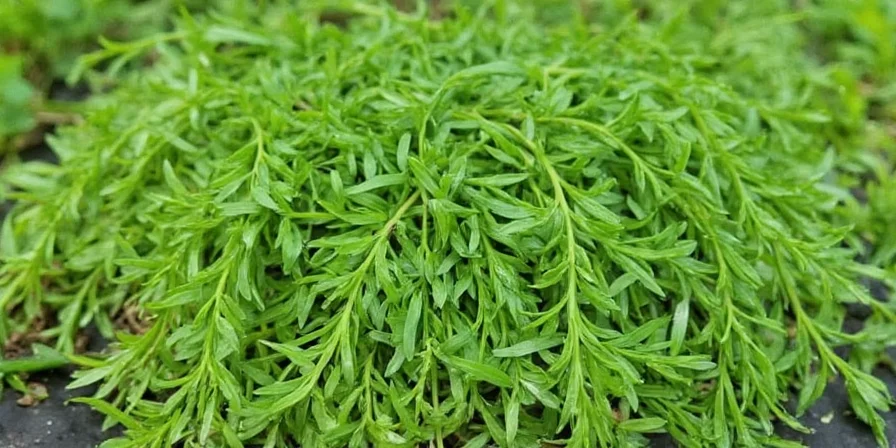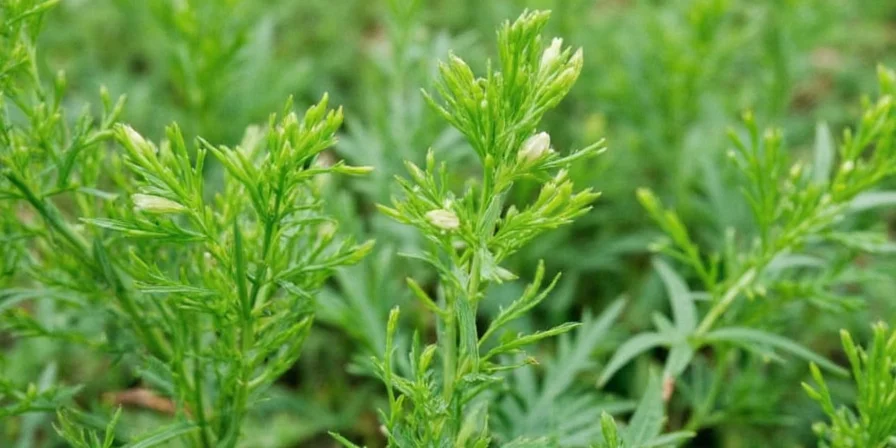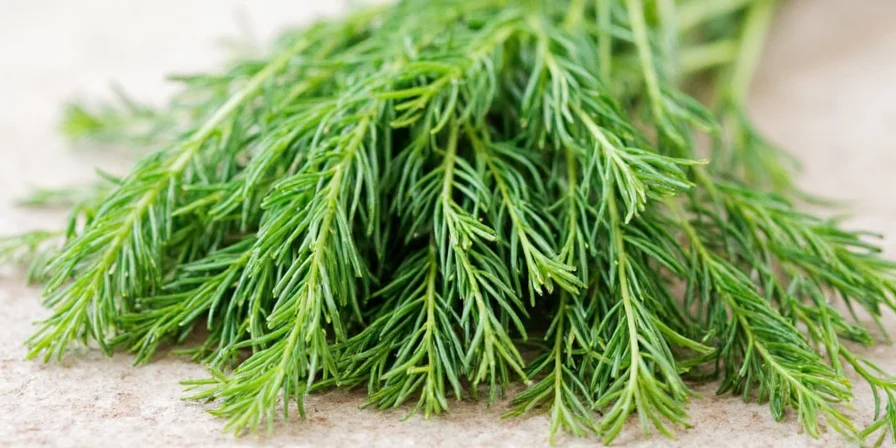Dill has a distinctive flavor profile combining bright citrus notes, fresh grassiness, subtle licorice undertones, and a light peppery finish. Unlike stronger herbs, dill offers a delicate balance that enhances rather than overwhelms dishes - making it perfect for seafood, salads, and pickling where a subtle herb flavor is desired. This guide delivers precise flavor characteristics and practical applications to help you confidently incorporate dill into your cooking.
Table of Contents
- What is Dill?
- Taste Profile: What Does Dill Taste Like?
- Culinary Uses of Dill
- Fresh vs. Dried Dill: Key Differences
- Flavor Pairings That Work Best With Dill
- Common Dill Usage Mistakes to Avoid
- Health Benefits of Dill
- Conclusion
What is Dill?
Dill (Anethum graveolens) is an aromatic herb known for its delicate, fern-like leaves and distinct flavor profile. Native to the Mediterranean and parts of Asia, dill has been used for thousands of years for culinary and traditional medicinal purposes.
The two main forms you'll find are:
- Fresh dill: Sold with feathery green leaves intact, offering the most vibrant flavor.
- Dried dill: Available as dill weed (crushed leaves) or dill seeds (small brown seeds with stronger flavor).

Taste Profile: What Does Dill Taste Like?
Dill delivers a complex yet balanced flavor signature best described as: bright citrus notes, fresh grassiness, subtle licorice undertones, and a papery pepper finish. Unlike overpowering herbs, dill's charm lies in its nuanced layering—citrus notes hit first, followed by fresh grassiness, then a gentle licorice whisper.
| Taste Component | Flavor Description |
|---|---|
| Citrus | A bright, lemon-lime tang that refreshes dishes without acidity. |
| Grassy/Fresh | Reminiscent of fresh-cut herbs or a spring garden after rain. |
| Licorice | A subtle sweetness similar to fennel—mild and not overpowering. |
| Peppery Finish | A faint spiciness that lingers, especially noticeable in dill seeds. |
Important clarification: Dill does NOT taste like dill pickles. The "dill pickle" name comes from historical usage where dill seeds were used in pickling. Fresh dill has a much more delicate flavor than the strong taste associated with pickles.

Culinary Uses of Dill
Dill's delicate flavor shines in specific applications. Here are the most effective uses:
- Seafood pairings: Salmon, trout, and shrimp benefit most from fresh dill's citrus notes.
- Raw preparations: Tzatziki, cucumber salad, and potato salad where freshness matters.
- Pickling: Dill seeds provide the classic pickle flavor; fresh dill adds complexity.
- Cold soups: Perfect for summer borscht or yogurt-based soups.
- Finishing touch: Sprinkle fresh dill on completed dishes for maximum flavor impact.

Fresh vs. Dried Dill: Key Differences
Understanding these differences prevents common cooking mistakes:
| Type | Flavor Profile | When to Use | Substitution Ratio |
|---|---|---|---|
| Fresh Dill | Mild, vibrant, with bright top notes | Raw dishes, garnishes, last-minute additions | 1 part fresh = 3 parts dried |
| Dried Dill Weed | More concentrated, earthier, less bright | Cooking into sauces, stews, soups | 1 part dried = 1/3 part fresh |
| Dill Seeds | Earthy, stronger, noticeably peppery | Pickling, breads, spice blends | Not directly interchangeable |

Flavor Pairings That Work Best With Dill
These combinations maximize dill's flavor profile:
- Dill + Lemon/Citrus = Bright freshness – Essential for seafood dishes and creamy sauces.
- Dill + Garlic = Balanced complexity – Works in compound butters and yogurt dips.
- Dill + Cucumber = Classic combination – Perfect for salads, sandwiches, and cold soups.
- Dill + Sour Cream/Yogurt = Traditional pairing – Foundation for tzatziki and Scandinavian sauces.
- Dill + Vinegar = Enhanced brightness – Ideal for dressings and pickling solutions.

Common Dill Usage Mistakes to Avoid
Prevent these frequent errors that compromise dill's flavor:
- Adding fresh dill too early – Volatile oils evaporate with prolonged heat; add in last 2-3 minutes of cooking.
- Using stems instead of fronds – Thick stems are bitter; use only the delicate leafy parts.
- Confusing dill weed with dill seeds – They have different flavor profiles and uses.
- Overusing dried dill – It's more concentrated; start with half the amount you'd use fresh.
- Storing improperly – Fresh dill lasts 4-5 days in fridge wrapped in damp paper towel.
Health Benefits of Dill
Research shows dill offers several health benefits:
- Digestive support: Contains compounds that may help reduce bloating and improve digestion.
- Antioxidant properties: Rich in flavonoids that combat oxidative stress.
- Natural breath freshener: Chewing dill seeds neutralizes odors effectively.
- Anti-inflammatory effects: Contains monoterpenes with potential inflammation-reducing properties.

Conclusion
Dill offers a refreshing citrus-grass-licorice profile with a papery pepper finish—creating a versatile flavor that elevates seafood, salads, and pickled vegetables. Understanding its delicate balance prevents overpowering dishes while maximizing its bright, herbaceous charm. By recognizing freshness indicators and strategic pairings, you'll transform dill from a garnish afterthought into an intentional flavor catalyst. Remember: add fresh dill at the end of cooking to preserve its volatile oils, and always crush dried dill between your palms to activate its full aroma. Now go experiment with confidence!
Frequently Asked Questions (FAQs)
Does dill taste like licorice or anise?
Dill has subtle licorice notes but is much milder than anise or fennel. The licorice flavor in dill is barely detectable to most people and serves as a background note rather than the dominant flavor.
Why does my dill taste bitter?
Bitterness occurs when dill is exposed to heat too early in cooking or when thick stems (which contain more tannins) are used excessively. Always use leafy fronds, not thick stems, and add fresh dill in the last 2 minutes of cooking.
How is dill different from cilantro?
Dill has citrus-grass-licorice notes while cilantro has a bright, citrusy flavor with soapy undertones for some people. Dill works best with fish and pickles; cilantro shines in Mexican and Asian cuisines. They're not interchangeable in most recipes.
Does dill taste like fennel?
Dill and fennel both have subtle licorice notes, but fennel is significantly stronger and sweeter with pronounced anise flavor. Dill is more grassy and citrus-forward, making it much more versatile in savory dishes.
Why do dill pickles taste different from fresh dill?
Dill pickles primarily use dill seeds (not fresh dill weed) which have a stronger, earthier, more peppery flavor. The pickling process with vinegar and fermentation also transforms the flavor profile significantly.











 浙公网安备
33010002000092号
浙公网安备
33010002000092号 浙B2-20120091-4
浙B2-20120091-4